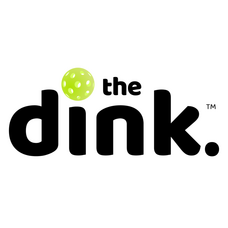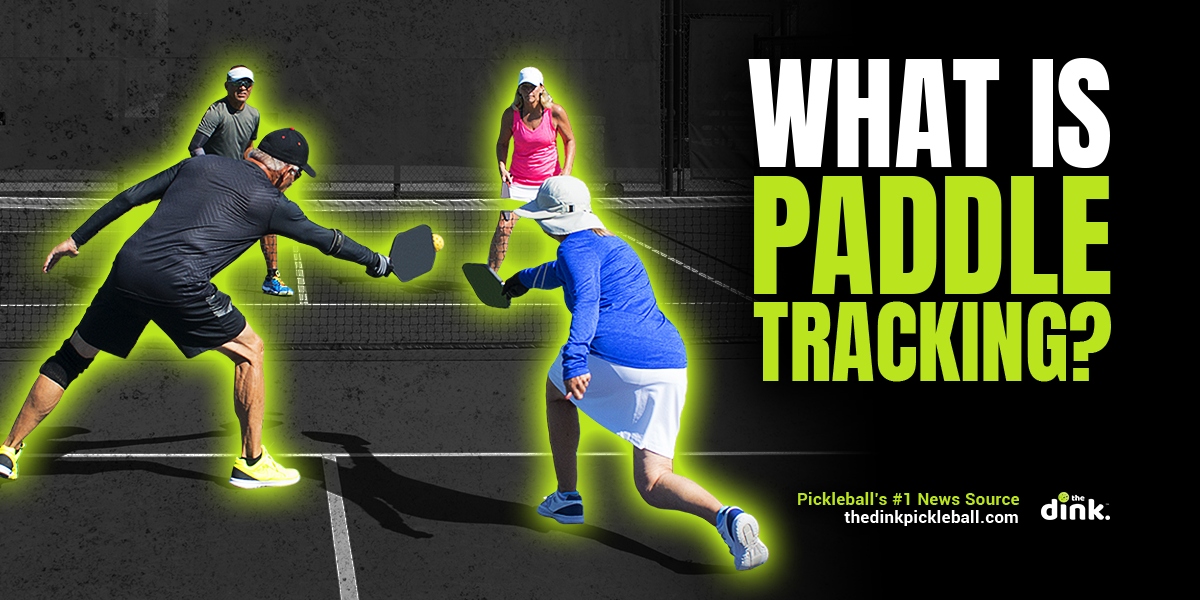
What is Paddle Tracking and How Can it Make You a Better Pickleball Player?
Paddle tracking is something you see regularly during high-level pickleball play.
It's a skill that hardly anyone talks about, yet it's a massive reason why better players seem to have faster hands, better volleys, and commit fewer errors at the net.
Once you learn this skill, you'll be amazed at how much better it makes you and wonder how you ever played pickleball without it.
What is paddle tracking?
Paddle tracking is simple.
It's acting as though the top of your paddle is a scope or a pair of eyes that must follow the ball everywhere it goes.
Wherever the ball is, that's where your paddle should be facing.
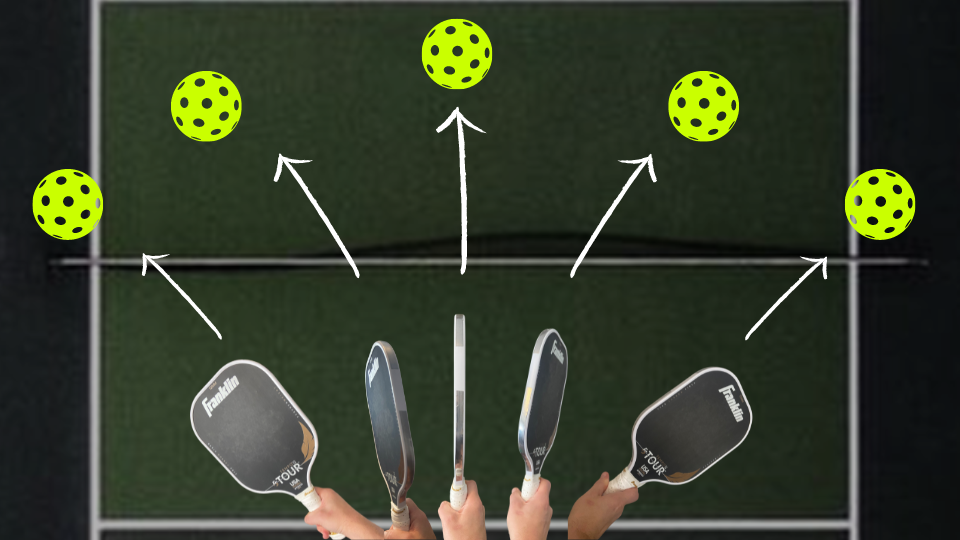
When the ball is on the left side of the court, the tip of your paddle should be facing the left. When it's on the right, the tip should be facing right.
As you track the ball with your paddle, your forehand or backhand should naturally open up, putting you in an ideal ready position if the ball suddenly comes your way.

Unfortunately, that's not what most players do.
Instead, most players keep their paddle neutral (or slightly backhand) no matter where the ball is on the court.

This lack of preparation leads to poor timing, mishits, and missed balls.
As an added step, you should also angle your body to match your paddle tip. That way, your chest and hips are in line, preparing for the next shot.
Now that you understand what paddle tracking means, let's discuss its benefits.
The benefits of paddle tracking
At the kitchen, pickleballs can fly at you fast.
Because of this, you don't always have time to get your paddle into a good position right before hitting the ball. If your timing is off, even slightly, you could hit the ball into the net or send it flying through the backcourt.
Paddle tracking puts your paddle in a good position
Let's say you're on the left side of the court, and your crosscourt opponent sends a speedup down the middle.
If your paddle is sitting neutral (straight up and down like the image with the X above), you have to:
- Turn your paddle (and your hips)
- Strike the ball

Now, let's say instead of sitting neutral, your paddle face (and hips) are already turned toward the crosscourt opponent.
Instead of that extra step (bringing your paddle back), all you have to do is move it forward to strike the ball:
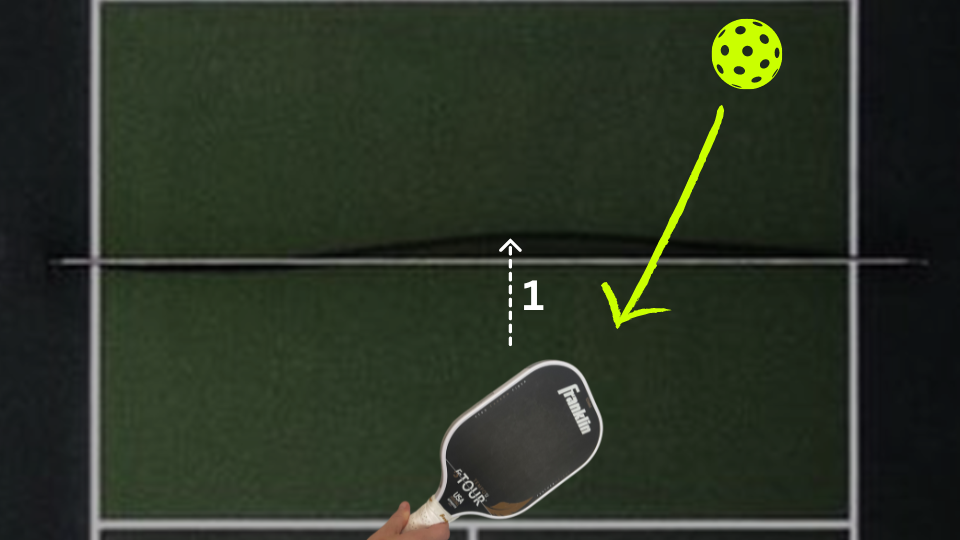
Reducing the movement of taking your paddle back eliminates an unnecessary backswing and helps you hit more consistent counters.
If you find yourself swinging too hard while at the kitchen line, especially on speedups or counters, then you should focus more on paddle tracking to help you eliminate your backswing.
Paddle tracking puts pressure on your opponents
When the ball is in play, our eyes follow it instead of looking at the players. This is because our peripheral vision allows us to see where each player is on the court.
This is how we find gaps between players or holes to hit the ball into.
When we have our paddle straight up, the middle of the court can appear open to our opponent.
However, if we fill that gap by turning our bodies and paddles toward the hole, they will feel like they have nowhere to go with the ball. This will force them to either dink or try to beat you through the middle.
If they dink, you have plenty of time to get your paddle down and return the ball back.
If they try to beat you through the middle, you're right there to swat it down.
Of course, they could also try to lob, but we're not talking about that right now.
You're in a great position to respond no matter what they decide to do with the ball.
Paddle tracking helps you take more balls out of the air
Another great benefit to paddle tracking is that it forces you to stay engaged and ready to attack every ball.
If they choose to dink the ball but leave it slightly high, you're already in a great position to take it out of the air – either with an attack or a well-placed aggressive dink.
You are in control of the point.
Paddle tracking gives you "fast" hands
What often looks like fast reflexes or great hands can often be chalked up to anticipation and early paddle preparation.
Players with "slow" hands have too much movement between the ball coming off their opponent's paddle and attempting to hit it with theirs.
Players with "fast" hands treat every ball as though it could be a speedup, which means they are ready for it if it happens. And, if it doesn't happen, they know they have time to move into a new position to hit a softer ball.
A quick video on paddle tracking can be seen here from AllThingsPickleball:
Being prepared early by tracking the ball with your paddle and body will improve your hand speed and prevent costly mistakes at the kitchen line.
It'll also help you level up your pickleball skills.
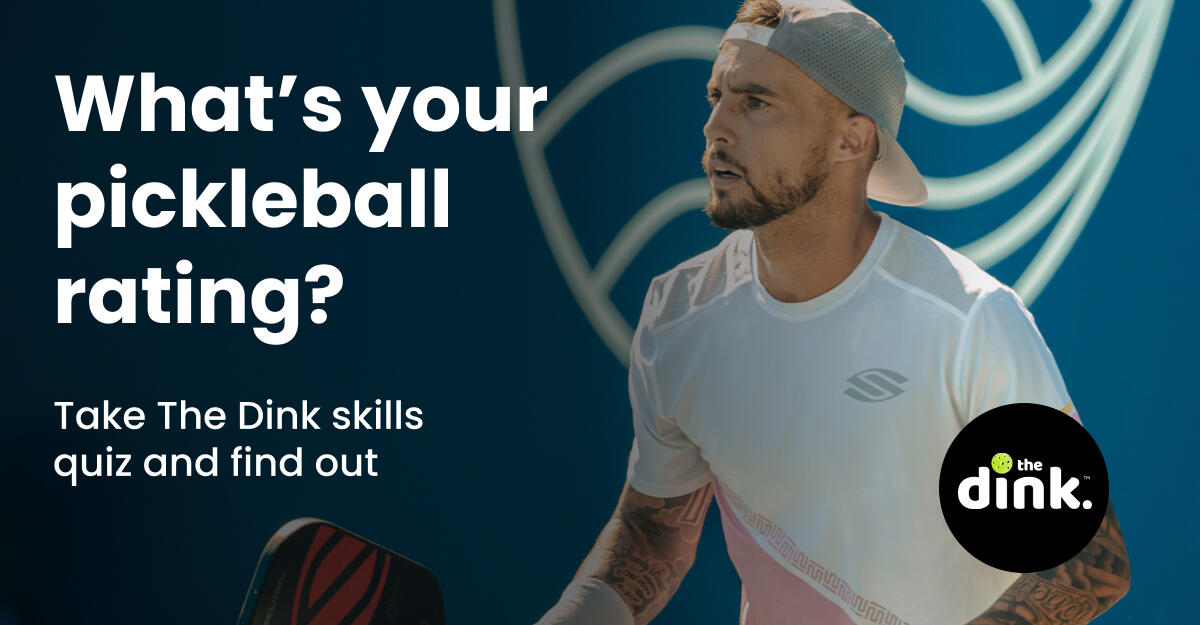

Love Pickleball? Join 100k+ readers for free weekly tips, news & gear deals.
Subscribe to The DinkGet 15% off pickleball gear at Midwest Raquet Sports

